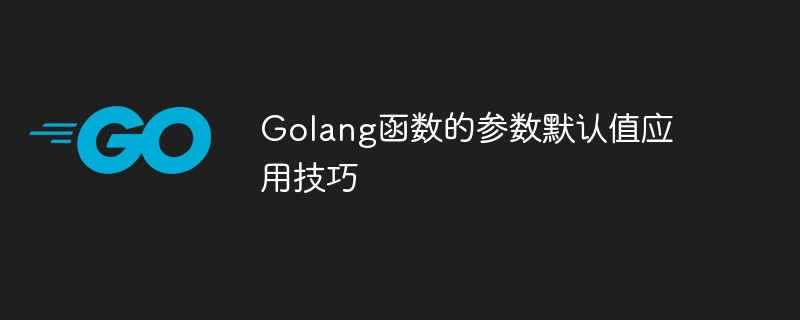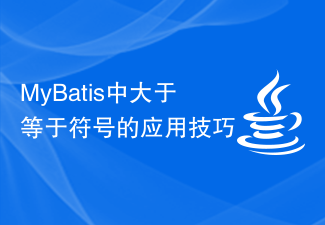
Virtual functions and pure virtual functions in C are common tools for many programmers using object-oriented programming. Under the premise of using them correctly, the flexibility and maintainability of the program can be greatly improved. This article will discuss the application skills of virtual functions and pure virtual functions, and share some practical development experiences.
1. Virtual function
1. What is a virtual function?
Virtual function is a technology used to implement polymorphism, which allows the member functions of a class to be dynamically determined at runtime. When a virtual function is called using a base class pointer or reference, the program determines which function to call based on the type of the actual object, thus achieving runtime polymorphism.
2. Application scenarios of virtual functions
- The base class pointer or reference points to the derived class object and needs to implement polymorphism;
- Some functions in the base class Needs to be redefined in derived classes.
3. Precautions for using virtual functions
- Virtual functions can be overridden by derived classes, but cannot be overloaded by derived classes;
- If virtual functions If it is not overridden, the default implementation in the base class is called;
- The constructor cannot be a virtual function.
2. Pure virtual function
1. What is a pure virtual function?
A pure virtual function is a virtual function without a defined implementation. Its definition form is "virtual function type function name () = 0;", where the 0 after the equal sign indicates that the function is a pure virtual function. Pure virtual functions must be redefined in derived classes, otherwise compilation errors will result.
2. Application scenarios of pure virtual functions
- The base class defines a function interface, but cannot provide a default implementation;
- The base class hopes to force derived classes Implement a function to meet specific needs.
3. Precautions for using pure virtual functions
- As long as a pure virtual function is defined in a class, it becomes an abstract class and objects of this class cannot be defined;
- The derived class must implement the pure virtual function in the base class, otherwise it will cause a compilation error;
- If the derived class does not implement a pure virtual function in the base class, the derived class will also become abstract class.
3. Application skills of virtual functions and pure virtual functions
1. Use virtual functions to achieve polymorphism
Virtual functions can realize polymorphism very conveniently. Let different objects show different behaviors at runtime to improve the flexibility of the program. The following is an example:
class Shape {
public:
virtual void draw() {
// 基类默认实现
}
};
class Circle : public Shape {
public:
void draw() {
// 具体实现
}
};
class Square : public Shape {
public:
void draw() {
// 具体实现
}
};
int main() {
Shape* p = new Circle();
p->draw(); // 调用圆形的实现
p = new Square();
p->draw(); // 调用正方形的实现
return 0;
}By defining the draw function of Shape as a virtual function, we can use the base class pointer to call the implementation of different derived classes at runtime, achieving polymorphism.
2. Use pure virtual functions to define interfaces
Defining pure virtual functions can define the base class as an interface class and force the derived class to implement a specific interface. The following is an example:
class Interface {
public:
virtual void func1() = 0;
virtual int func2() = 0;
};
class Implement : public Interface {
public:
void func1() {
// 具体实现
}
int func2() {
// 具体实现
}
};
int main() {
Interface* p = new Implement();
p->func1();
cout << p->func2() << endl;
return 0;
}By defining the functions in Interface as pure virtual functions, we can force the Implement class to implement these functions, thus defining Interface as an interface class.
3. Avoid calling virtual functions in constructors and destructors
The call of virtual functions is determined dynamically at runtime, so call virtual functions in constructors and destructors , may lead to unexpected results. Therefore, we need to avoid calling virtual functions in constructors and destructors.
4. Summary
This article introduces the basic concepts and usage of virtual functions and pure virtual functions in C, and shares some application skills. During the program development process, we can flexibly use virtual functions and pure virtual functions according to specific needs, thereby improving the flexibility and maintainability of the program. At the same time, care needs to be taken to avoid calling virtual functions in constructors and destructors to avoid potential errors.
The above is the detailed content of Application skills of virtual functions and pure virtual functions in C++. For more information, please follow other related articles on the PHP Chinese website!
 Golang函数的参数默认值应用技巧May 15, 2023 pm 11:54 PM
Golang函数的参数默认值应用技巧May 15, 2023 pm 11:54 PMGolang是一门现代化的编程语言,拥有很多独特且强大的功能。其中之一就是函数参数的默认值应用技巧。本文将深入探讨如何使用这一技巧,以及如何优化代码。一、什么是函数参数默认值?函数参数默认值是指定义函数时为其参数设置默认值,这样在函数调用时,如果没有给参数传递值,则会使用默认值作为参数值。下面是一个简单的例子:funcmyFunction(namestr
 C++中的正则表达式及其应用技巧Aug 22, 2023 am 08:28 AM
C++中的正则表达式及其应用技巧Aug 22, 2023 am 08:28 AM在C++开发中,正则表达式是一种非常有用的工具。利用正则表达式,可以方便地对字符串进行匹配、查找等操作。本文将介绍C++中的正则表达式及其应用技巧,帮助读者更好地应用正则表达式解决开发中的问题。一、正则表达式介绍正则表达式是一组字符组成的模式,用于匹配一定规律的字符串。正则表达式通常由元字符、限定符和字符组成。其中,元字符有特殊的含义,用于表示一类字符,限定
 C++中的位运算及其应用技巧Aug 22, 2023 pm 12:39 PM
C++中的位运算及其应用技巧Aug 22, 2023 pm 12:39 PMC++中的位运算是程序员们常用的一种运算方法,通过使用位运算来处理数据能够更加高效地完成一些复杂的计算任务。本文介绍了C++中的常用位运算符号及其应用技巧,以及在实际开发中可能会用到的一些实例。位运算符号C++中提供了六个位运算符号,这些符号能够对二进制位进行操作,其中四个是按位运算符,另外两个是移位运算符。按位运算符号如下:&按位与运算:两个二进制位都
 C++ 函数调试详解:如何调试虚函数中的问题?May 02, 2024 pm 03:42 PM
C++ 函数调试详解:如何调试虚函数中的问题?May 02, 2024 pm 03:42 PM虚函数调试方法:设置断点单步执行;使用assert()验证条件;利用调试器工具检查动态类型、函数栈和重新定义虚函数。
 C++ 函数重载与虚函数如何协作?Apr 26, 2024 am 10:09 AM
C++ 函数重载与虚函数如何协作?Apr 26, 2024 am 10:09 AMC++中函数重载允许为具有不同参数的同名函数定义不同的实现,而虚函数允许在派生类中覆盖基类函数,实现多态性。函数重载和虚函数可以协同工作,通过在基类中设计一个虚拟重载函数,派生类可以仅重载特定参数组合的版本,从而提供更灵活的多态性,如实战案例中计算不同类型形狀到原點的距離。
 MyBatis中大于等于符号的应用技巧Feb 22, 2024 pm 09:12 PM
MyBatis中大于等于符号的应用技巧Feb 22, 2024 pm 09:12 PMMyBatis是一款流行的Java持久层框架,广泛应用于各种类型的项目中。在MyBatis中,大于等于符号(>=)是常用的操作符之一,用于筛选大于或等于某个特定值的记录。本文将探讨在MyBatis中使用大于等于符号的应用技巧,并提供具体的代码示例。首先,我们需要明确在数据库查询中如何使用大于等于符号。在SQL语句中,通过使用>=操作符可以筛选出大
 在C++中使用MySQL数据库及其应用技巧Aug 22, 2023 pm 05:18 PM
在C++中使用MySQL数据库及其应用技巧Aug 22, 2023 pm 05:18 PMMySQL是一种流行的开源数据库管理系统,可以用于存储和管理各种类型的数据。本文将介绍如何在C++中使用MySQL数据库以及一些应用技巧。安装MySQLC++Connector首先需要安装MySQLC++Connector。可在MySQL官网(http://dev.mysql.com/downloads/connector/cpp/)下载对应操作系统
 C++ 友元函数与虚函数的交互Apr 16, 2024 pm 03:45 PM
C++ 友元函数与虚函数的交互Apr 16, 2024 pm 03:45 PM在C++中,友元函数与虚函数交互使友元函数可以访问虚函数,并调用派生类中的友元函数访问基类的私有成员。这种交互可用于访问继承体系中隐藏的数据或实现多态行为。


Hot AI Tools

Undresser.AI Undress
AI-powered app for creating realistic nude photos

AI Clothes Remover
Online AI tool for removing clothes from photos.

Undress AI Tool
Undress images for free

Clothoff.io
AI clothes remover

AI Hentai Generator
Generate AI Hentai for free.

Hot Article

Hot Tools

MinGW - Minimalist GNU for Windows
This project is in the process of being migrated to osdn.net/projects/mingw, you can continue to follow us there. MinGW: A native Windows port of the GNU Compiler Collection (GCC), freely distributable import libraries and header files for building native Windows applications; includes extensions to the MSVC runtime to support C99 functionality. All MinGW software can run on 64-bit Windows platforms.

DVWA
Damn Vulnerable Web App (DVWA) is a PHP/MySQL web application that is very vulnerable. Its main goals are to be an aid for security professionals to test their skills and tools in a legal environment, to help web developers better understand the process of securing web applications, and to help teachers/students teach/learn in a classroom environment Web application security. The goal of DVWA is to practice some of the most common web vulnerabilities through a simple and straightforward interface, with varying degrees of difficulty. Please note that this software

Atom editor mac version download
The most popular open source editor

VSCode Windows 64-bit Download
A free and powerful IDE editor launched by Microsoft

Dreamweaver CS6
Visual web development tools






